
Every beader wants to try a beaded bead sometime.
It isn’t easy to figure out by yourself how to do this, so I want to present several links which show how to bead different beads from beads.
Ehm… ;-))
The beaded beads on the photo were all woven by me around a bigger bead inside.
Links:
Janie’s Embellished Beads
Janie shows a basic bead and countless variations, one more beautiful than the next
About.com: Beadwork:
Bead a Beaded Bead
About.com: Jewelrymaking:
The beads here aren’t spheres, but cylinders, very good to learn the Peyote stitch (links below)
Beaded Bead
Beaded Bead Bracelet
Beaded Balls (French) (with explaining diagrams)
Beaded Ball & Loop Closure (English)
Peyote stitch:
About.com: Beadwork: A website with lots of tutorials about beadwork
Basic Beading Stitch Tutorials
Perlenhobby.de: A website with lots of (german) tutorials about beadwork: click on
‘Anleitungen’ in the sidebar left and there select one of the Peyote tutorials
Online Translators:
Google – Google-Deutschland
Yahoo – Yahoo-Deutschland
Worldlingo


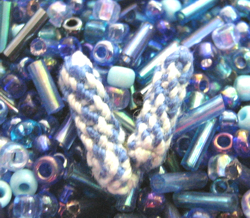
 Therefore I figured out how to make my own Kumihimo beads.
Therefore I figured out how to make my own Kumihimo beads.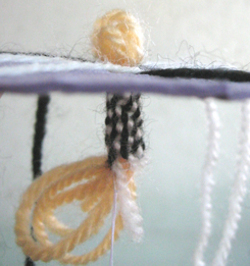 What to do:
What to do: The Kumihimo beads are from fabric and can be stitched however you want. On this photo I surrounded my Kumihimo bead by seed beads and made a kind of
The Kumihimo beads are from fabric and can be stitched however you want. On this photo I surrounded my Kumihimo bead by seed beads and made a kind of 
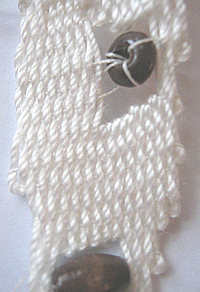



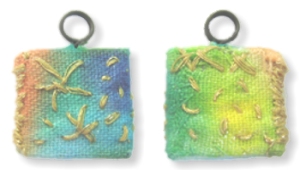
 img 1: Cut 3 equal pieces of your cardboard.
img 1: Cut 3 equal pieces of your cardboard. img 2: Wrap the wire round a dowel to form the eye. Then turn a couple of times to form the peg and then form a bigger eye which will be hidden in the pendant.
img 2: Wrap the wire round a dowel to form the eye. Then turn a couple of times to form the peg and then form a bigger eye which will be hidden in the pendant. img 3: Take the cardboard piece which will sit in the middle and trace your hanger.
img 3: Take the cardboard piece which will sit in the middle and trace your hanger. img 4: Cut out the place you will need for the hanger.
img 4: Cut out the place you will need for the hanger. img 5: Glue the hanger and the middle cardboard pieces onto one outer cardboard piece.
img 5: Glue the hanger and the middle cardboard pieces onto one outer cardboard piece.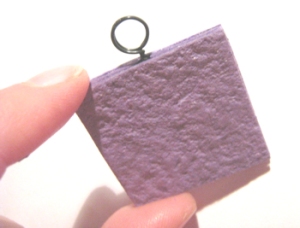 img 6: Glue the other outer cardboard piece onto. Your pendant-to-be-embellished is finished and you may begin with the embellishments.
img 6: Glue the other outer cardboard piece onto. Your pendant-to-be-embellished is finished and you may begin with the embellishments.
